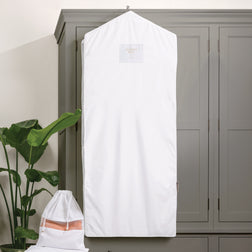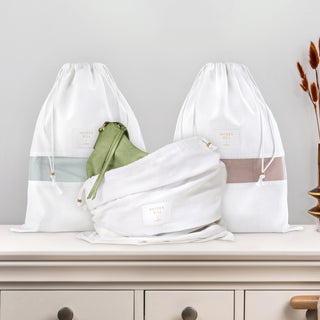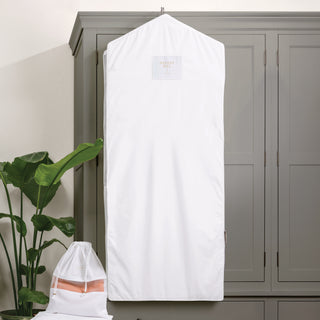Silk and Satin may feel the same to the touch but that’s where the similarities end. If you would like to know how these fabrics are made, how they differ, and how to care for them please read on.
Film icon Audrey Hepburn said, “When I wear a silk scarf I never feel so definitely a woman, like a beautiful woman.”
Poet Dorothy Parker said, “Where’s the man that could ease a heart like a satin gown?”
Which do you think is best?
To a non-discerning eye, silk and satin may look alike. But they are actually very different.
What is Silk?
Silk is a natural protein fibre gathered from certain insects, most commonly the mulberry silkworm. Silk is known to be very insulating, which allows people to wear silk for warmth in the winter and to stay cool during the summer.
Silk has a luxurious look and feel, which is achieved through the process of producing silk from thousands of silkworms. This laborious process should be reflected in the price of an item, but surprisingly, the cost of silk items vary widely.
An inexpensive silk item typically indicates low quality silk or a silk blended with synthetic materials. Some silk blends retain their quality and wear as well as pure silk and may be easier to launder.
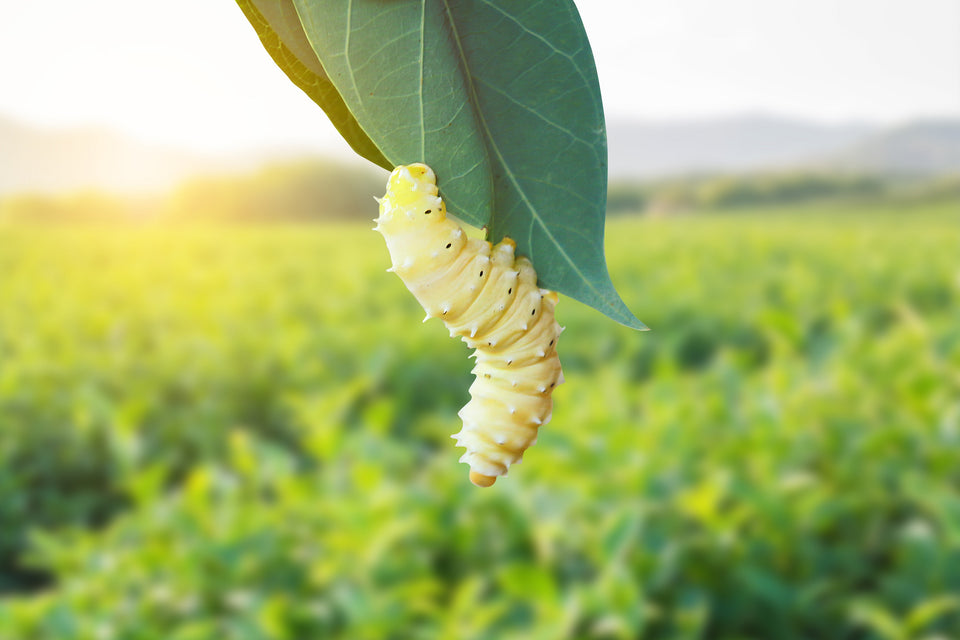
What is Satin?
The word satin actually describes a weave, not a fibre. Herringbone and twill are other examples of weaves. Weaves are often named from the way their threads are laid over each other. In this instance, satin threads are woven in such a way that one side of the fabric has a bold sheen, while the other side is dull.
Satin can be classified by harness, which is how many times the yarn passes over itself before wrapping under to form the satin weave:
- 4-harness (4HS), somewhat pliable, but more pliable than non-satin textiles
- 5-harness (5HS), medium pliability
- 8-harness (8HS), most pliable
Satin may also be labelled by the type of material being woven with a satin finish, or a particular way the satin drapes. Some of the names you may see include:
- Antique
- Baronette
- Charmeuse
- Double-faced
- Duchess
- Faconne
- Venetian cloth
- Gattar
- Messaline
- Polysatin
- Slipper satin
- Sultan
- Surf satin
What is Silk Satin?

Silk can also be woven to have a satin finish, which is called silk satin. As you can imagine, silk woven with a satin finish represents an ultimate luxury product. Not only does it have the suppleness and natural shine of silk, but the weave also catches the light in a unique way. And, the buttery-smooth feel of the fabric against the skin makes it ideal for undergarments and bed linens where ultimate comfort is desired.
Silk satin is often priced at a premium. The tedious production process of silk combined with the highly specialised skill needed to create satin weaves mean expensive price tags. Plus, silk and satin are both difficult materials to work with when making clothes and other detail-heavy pieces.
Which is Better? Silk or Satin?
Some unethical textile manufacturers and clothing retailers may take advantage of the similarities between silk and satin to market items they can charge more for even if they aren’t worth it.
If a salesperson tries to sell you a satin item, saying it is superior to silk, they either think you don’t know the difference or they don’t know themselves.
Fortunately, most reputable manufacturers and retailers will clearly label a garment 100% silk if that is the fabric used and satin finish if it has been woven as such.
That doesn’t mean items that are made with a satin finish but not of silk are of poor quality. Pieces made from a blend of natural and synthetic fibres can typically withstand regular wash and dry cycles a little better than their all-natural counterparts. These might be a better choice depending on how you plan to wear an item.
Wearing and Caring for Satin Garments

Satin is used in a variety of garment types. We sleep, we play, we dance, we eat, and we work all while wearing satin.
Satin-finished fabric requires extra care when washing and drying, especially when it’s made of silk or other natural fibres. Improperly handled, satin fabric can develop permanent stains, become warped, or even fray apart at the seams. Satin made from synthetic materials and blends may also be difficult to dye or colour-treat in any way, as synthetic fibres are not as porous as natural ones.
If your satin fabric has any amount of natural fibre in its blend, you should follow the instructions for taking care of a garment made of 100% natural fibre, like silk. Remember that although silk is the strongest natural filament used in garment-making, it loses a lot of its strength when wet. A satin finish doesn’t change this fact, although a blend of silk and synthetic materials may be more resistant to damage.
Cool water washes, mild detergents, and no-heat drying techniques will keep your garments in good shape, as will smart storage solutions.
Making sure your garments are completely dry before you store them can prevent unsightly things like mold spots and mildew damage. We recommend Hayden Hill garment storage bags to preserve the beauty of your satin and silk items. Our bags are made of organic, soft cotton with a sheer, organza side panel so you can see your pieces while keeping them protected from light, dust, and moths. Hayden Hill delivers sustainable and beautiful garment care to protect what you love.
And just as you would with cashmere and Merino wool, you should occasionally get silk and satin items out of storage for a quick wash. Both fabrics can easily trap perspiration stains that aren’t visible until they’ve had time to yellow through oxidation. Soak garments in cool water with ½ cup of vinegar for half an hour before thoroughly washing and drying them again. Use acid-free tissue paper between folded layers to allow the items to breathe while in storage.

FAQs about Satin
Is polyester satin fabric the same as silk?
No. Polyester, a synthetic material, can be made in such a way that, when woven with a satin finish, mimics silk satin. But, this material isn’t breathable and won’t have the same wearability and durability as silk satin. It’s a great choice for costumes, however, since it only needs to look the part.
Is satin good to sleep in?
Many people love sleeping in silk with a satin finish not only because of the luxurious feel, but because the natural fibres help protect their hair and skin while they sleep. Silk protects hair from friction that causes dryness and breakage, which is why silk bonnets are popular. This is especially true for people with curly hair that may be prone to more breakage than those with straight hair.
Which is softer, silk satin or satin made from other filaments?
When it comes to softness, nothing can quite compare to high-quality silk that’s been woven with a satin finish. All other satin-finished garments will be noticeably inferior.
Which is cooler, silk satin or satin made from other filaments?
All natural fibres are more breathable than synthetic ones, so silk satin will be cooler than other kinds of satin fabric. After all, silk was meant to regulate temperature in the cocoon of a silkworm.
Which is better, silk satin or satin made from other filaments?
The best choice depends on your use and your preference, but it’s hard to argue with the quality of silk. Silk has retained its market value for centuries for good reason - it’s luxurious and practical.
How can you tell the difference between silk satin and satin made from other filaments?
If your item lacks a label, or the label is unclear, there is a way to be certain whether the piece is silk satin or something else. That is, if you are willing to try the burn test.
Snip off a piece of inconspicuous fabric, like the inside seam allowance, then light an edge on fire and see how it burns. If it’s synthetic, the edge will curl and harden. If it’s natural, it will smolder and crisp off once burnt.
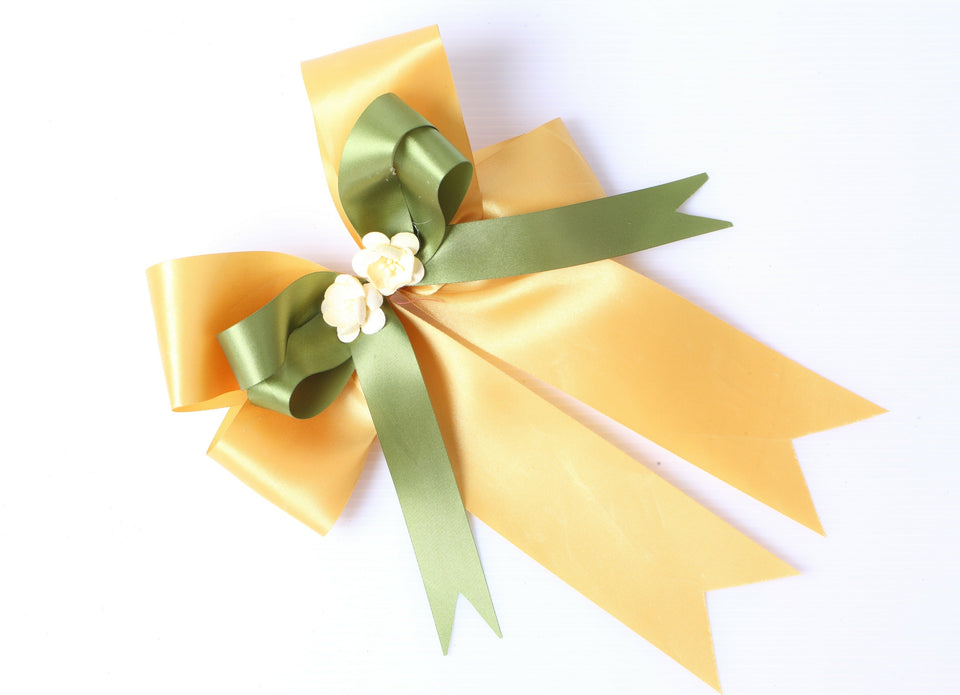
Now that you know the differences between silk and satin, you’ll be able to fill your wardrobe with quality pieces that will last for years to come.

